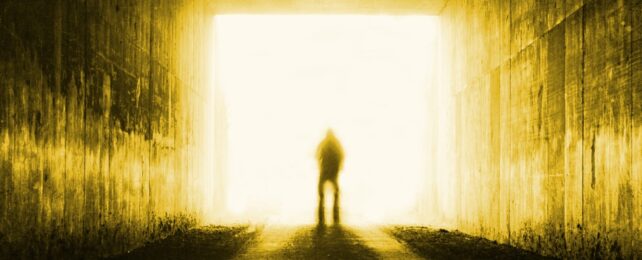For a select few who have stood on the brink of clinical death, the process of dying is often accompanied by feelings of peace, bright lights, and a sense of disconnection with the body.
A new study on the prevalence and order of these commonly reported experiences has found not all people experience the steps in the same order, which could help tease apart the complex relationship between neurology and culture in life's final moments.
The research conducted by Belgian researchers was based on 154 survey responses and narratives collected through the International Association for Near-Death Studies and the Coma Science Group.
Respondents were determined using what's called the Greyson NDE scale, a metric developed by US psychologist Bruce Greyson designed to provide structure and consistency in evaluating experiences recalled by patients when undergoing cardiac arrest.
While people have been applying science to the personal experience of dying for more than a century, the term Near Death Experience only dates back to 1975 when psychologist Raymond Moody used it to describe what he determined to be a "glimpse of the beyond".
Today, the components of a near death experience are almost cliché – a tunnel, bright lights, and positive emotions commonly reported and interpreted as a glimpse of some sort of after-life.
As fascinating as the topic is, studying the phenomenon can be rather complicated, with difficulties in separating cultural biases from neurological processes, and ethical challenges in recording physiological data in what is a critical moment.
Worse still, the field itself is readily associated with fringe research that makes it difficult to know where an open mind ends and pseudoscience begins.
Depending on what study you read and where you are in the world, anywhere from about 4 percent to 15 percent of the population have experienced what could be considered as a near death experience.
By some accounts, those who report similar experiences aren't even necessarily dying, suggesting the phenomenon is more about a neurological response to stress than death itself.
Given these are just those who retain memories of the event and are able to communicate it, it's possible that the numbers are a little higher.
This isn't the first research to find order among reported observations, with a study by neurologist Sam Parnia finding seven categories of memory recalled during a NDE.
In this latest study, the Belgian researchers took note of the specific observations recalled by the participants and then noted the order.
"The aim of our study was to investigate the frequency distribution of these features, both globally and according to the position of features in narratives, as well as the most frequently reported temporality sequences of the different near-death-experience features," says researcher Charlotte Martial from the University of Liège.
All up, 80 percent of those surveyed reported feeling peacefulness, followed by 69 percent seeing a bright light, and 64 percent encountering another individual.
Only 5 percent had what they called "speeding thoughts", and 4 percent described what they felt were precognitive visions.
In terms of order, 22 percent of participants claimed to have had an out-of-body experience, followed by seeing a tunnel, then a bright light, and lastly feeling at peace.
One third had an out-of-body sensation first, and a sense of returning to the body last.
"This suggests that near-death-experiences seem to be regularly triggered by a sense of detachment from the physical body and end when returning to one's body," says Martial.
There are plenty of the usual caveats to consider in research such as this; the surveys are self-selected, so don't include people who might feel uncomfortable sharing their experience.
There is also a matter of cultural interpretation; all respondents were French speaking, making it hard to know how much their cultural background influences recall or even the initial experience.
Still, if research such as this is replicated broadly in other populations, it could help highlight what aspects of the phenomenon are common to all of us, and which are framed by our expectations.
"Further research is necessary to explore these differences and the precise extent of which content of those experiences reflects their expectations and cultural backgrounds, as well as the neurophysiological mechanisms underlying near-death-experiences," says Martial.
Given the complexities of studying a dying brain, none of this is to imply that there is scientific evidence of an after-life. If anything, it might actually help us to understand how our brains construct the sensation of being alive.
This research was published in Frontiers in Human Neuroscience.
